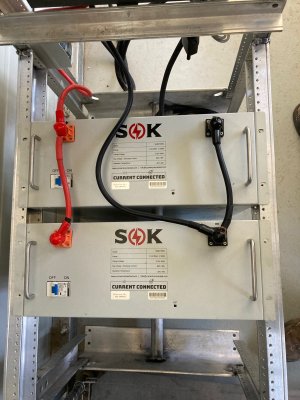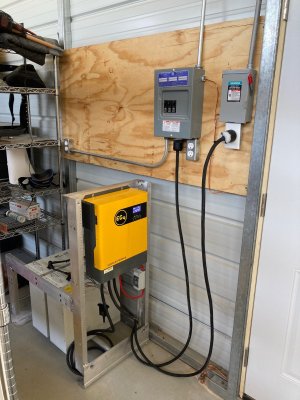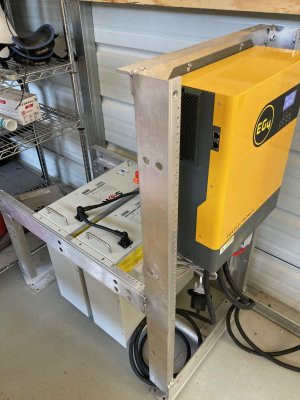What's the advantage of breakers over fuses?
You can just flip back on if it trips, so its easy.
But the cheaper DC breakers can be polarity sensitive, meaning you cannot run the current through them in the "wrong" direction. Even if its not over current, just having the current flow the wrong way through a polarized DC breaker is enough for it to burst into flames if you try to turn it off.
Here's a video showing one catch on fire due to nothing more than reverse polarity on a DC breaker when its turned off.
So if your'e using DC breakers, make sure they are wired in the correct polarity, or make sure they are not polarity sensitive. If a cheap imported DC breaker claims to not be polarized, I wouldn't necessarily trust their word on it.
If you want to keep it very simple and safe, go with fuses and accept that you'll have to replace them rather than have the convenience of resetting a breaker.
Also on the solar panels, if there are no more than 2 parallel strings of them, there is no need for over current protection on the panels. The panels are fine with their short circuit current, so if they're all in series, there is no over current protection needed. If its two strings in parallel,the two strings do not need protection because the most current they could see is 1x the short circuit current. If there's 3 or more strings in parallel, over current protection is required, because shorts in a single string could see 2x the short circuit current of the panels. What's worse - (depending on where the short is) that current can be in the reverse direction. Which means if you have 3 or more parallel strings of panels, there is no safe way to use a polarized DC breaker to protect to panels. Although a polarized DC breaker may be fine and protect you in most circumstances, if the short is in the wrong place, the breaker itself can cause a fire.
So on the panels (when 3 or more parallel strings) I'd suggest fuses for protection, and breakers for convenience elsewhere.
My charge controller is rated 500v on the PV input. One string of 12 panels in series would slightly exceed that, so I have two parallel strings of 6. My max voltage will be 250v, and I have no fuses or breakers on the solar panels because no panel can see more than 1x its rated short circuit current, and the wire is fine at the full current. Which is a long way of saying, in my configuration, the panels are not capable of producing enough current trip a properly sized fuse/breaker. So I just have a big DC rated switch.
BTW, diysolarforum.com is a great resource for figuring this stuff out.





